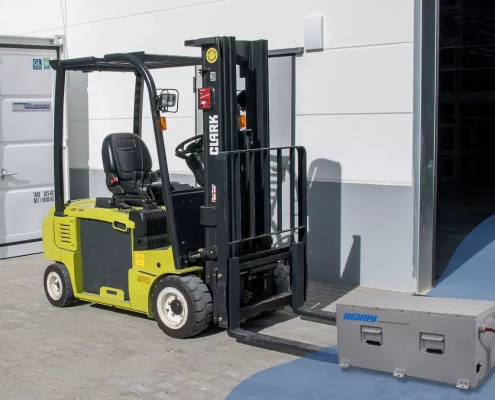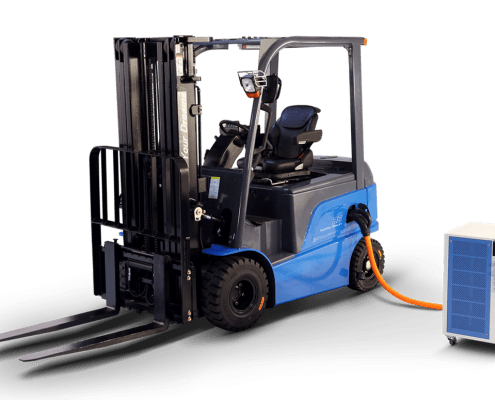12V Trojan Batteries Removal from Golf Cart & Lithium Conversion
Table of Contents
- 12V Trojan Batteries Removal from Golf Cart & Lithium Conversion
- 12v Trojan Batteries Removal From Golf Cart
- Advantages of Upgrading to Lithium Golf Cart Batteries
- How to Convert Golf Cart to Lithium Battery
- How to Install Lithium Battery in Golf Cart
- Cost to Convert Golf Cart to Lithium Battery
- Maximizing Performance with Lithium Golf Cart Batteries
- Conclusion
- Learn More About Battery
In this article, you’ll learn how to remove 12V Trojan batteries from your golf cart safely and efficiently. We’ll also cover the process of converting your golf cart to lithium batteries and provide detailed instructions for installing the new lithium battery. By following these steps, you can ensure a smooth transition and enhance your golf cart’s performance.
12v Trojan Batteries Removal From Golf Cart
Removing lead-acid batteries from your golf cart, like the 12V Trojan batteries, requires careful steps to ensure safety and efficiency. Here’s a guide to help you through the process:
- Prepare the Workspace
Make sure your golf cart is parked on a flat surface, as it has electronic motor brakes that should keep it stationary. - Isolate the Batteries
Locate the Run/Tow switch on your cart. Flip it from “Run” to “Tow” to isolate the batteries, preventing any accidental discharges. - Gather Tools and Safety Gear
Before starting, gather the following tools:- Non-metallic nylon ratchet wrench
- 9/16 deep socket (or ½ inch, depending on your nuts)
- T45 socket for removing hold-down straps
- Eye protection
- Disconnect the Batteries
Following safety protocols, always disconnect the negative terminal first. Use a carabiner to keep the negative cables together to avoid any accidental contact. Then, do the same with the positive cables. This ensures you’re working safely without any risk of shock. - Remove Interconnect Cables
Start by removing the interconnect cables between the batteries. This action de-energizes the entire battery pack, allowing you to work safely. - Take Off the Hold-Down Hardware
Using the T45 socket, remove the nuts that hold down the strap securing the batteries. You may need to push down slightly to relieve tension and make removal easier. Set aside these parts in a safe place to avoid losing them. - Prepare for Battery Removal
With the hold-down hardware removed, it’s time to lift the batteries out. These batteries weigh around 80 pounds each, so be cautious(For example Trojan t-1275 battery is around 85 pounds each). Avoid placing them directly on concrete to prevent staining; use towels or set them on dirt instead. - Lift and Remove Batteries
Carefully lift the batteries out of the tray, starting with the middle ones for balance. Ensure all connections and debris are cleared from the tray for a clean replacement. - Install New Batteries
Once the old batteries are out, place the new batteries in the same orientation. Ensure that the negative terminals face the correct direction as per your cart’s wiring. - Reattach the Hold-Down Hardware
Secure the new batteries with the hold-down strap. Make sure to tighten the nuts only finger-tight to avoid seizing in the future. It’s essential to clean any corrosion off the terminals and ensure proper contact. - Reconnect the Cables
Begin reconnecting the cables, starting with the positive terminal of the first battery and then the negative terminal. Continue this pattern until all batteries are reconnected, finishing with the final negative terminal. - Final Checks
Flip the Run/Tow switch back to “Run.” Turn the key to check for proper operation—listen for the reverse sound buzzer as a sign that everything is functioning correctly.
By following these steps, you can safely and effectively remove and replace your golf cart’s 12V Trojan batteries, ensuring a smooth transition to new power sources.
Advantages of Upgrading to Lithium Golf Cart Batteries
Making the switch from lead-acid to lithium batteries for your golf cart can lead to significant improvements in performance and convenience. Here’s why this upgrade is worth considering:
- Longer Lifespan
One of the standout benefits of lithium-ion batteries is their impressive longevity. While lead-acid batteries typically last around 3-5 years, lithium options can last 10 years or more with proper care. This extended lifespan reduces the frequency of replacements, saving you both time and money. - Weight and Size Benefits
Lithium batteries are significantly lighter and more compact than their lead-acid counterparts. This reduction in weight enhances your golf cart’s performance, allowing for faster speeds and improved maneuverability. Additionally, the smaller size frees up space for other modifications or storage. - Rapid Charging Capabilities
Time is precious on the golf course, and lithium batteries excel in this area. They can charge to 80% in just 30 minutes, allowing you to quickly get back on the green. In contrast, lead-acid batteries may take several hours to fully recharge. - Consistent Power Output
Unlike lead-acid batteries, which experience a decline in performance as they discharge, lithium batteries provide steady power throughout their entire discharge cycle. This means your golf cart will perform reliably from the first hole to the last, enhancing your overall experience. - Enhanced Durability
Lithium batteries are built to withstand extreme weather conditions and rough terrains. Their robust construction ensures they will perform optimally, regardless of the challenges faced on the golf course. - Maintenance-Free Operation
Say goodbye to the routine maintenance associated with lead-acid batteries. Lithium-ion options require little to no upkeep, eliminating tasks like checking water levels or cleaning terminals. This convenience means your golf cart is always ready for action without the added hassle.
Switching to lithium batteries not only enhances performance and convenience but also provides peace of mind. With safer storage, better reliability, and reduced maintenance, this upgrade can significantly elevate your golfing experience.
How to Convert Golf Cart to Lithium Battery
Converting your golf cart from lead-acid batteries to lithium golf cart batteries is a great way to improve performance and efficiency. Here’s how to make this transition smooth and successful.
Preparing Your Golf Cart for Conversion
Before diving into the conversion, it’s essential to prepare your golf cart properly. Follow these steps to ensure everything goes smoothly:
Evaluating Current Batteries
Start by checking the condition of your existing batteries. Use a multimeter to measure the voltage of each battery in the rack. If they are not holding a charge or are showing significantly lower voltage than expected, it’s a clear sign that it’s time to upgrade.
Additionally, consider performing a load test or using a hydrometer to assess battery health. Understanding the state of your current power supply will help determine if a conversion is necessary.
Checking Compatibility
Next, ensure that your golf cart can support lithium batteries. Check the voltage and amperage requirements of your golf cart to see if they align with lithium options. If your cart operates on 24 volts, 36 volts, or 48 volts, it’s vital to select the correct battery that matches these specifications.
For added safety, consult your vehicle manufacturer or an expert to confirm that the conversion is suitable for your specific model. This step can prevent potential damage from using incompatible components.
How to Install Lithium Battery in Golf Cart
Once you’ve prepared your golf cart, it’s time to start the conversion process. Here’s a detailed guide to help you through:
Installing the Lithium Battery
- Disconnect Power: Begin by disconnecting the main power to your golf cart. Start with the negative terminal, followed by the positive terminal. This ensures safety throughout the installation.
- Remove Old Batteries: Carefully take out the lead-acid batteries from the battery compartment. Pay attention to the connections and any mounting hardware that may need to be removed.
- Clean the Battery Tray: Before installing the new lithium batteries, clean the battery tray thoroughly. Remove any dirt, corrosion, or debris to ensure a good fit and optimal performance.
- Install the New Battery: Place the lithium battery in the tray, ensuring it fits securely. If you’re using multiple batteries, connect them according to your system requirements (in series or parallel).
Wiring and Connections
Proper wiring is crucial for a successful conversion:
- Inspect Cables: Before connecting anything, inspect the existing cables for signs of wear or corrosion. Replace any damaged cables to ensure a safe and effective installation.
- Connect Batteries: If using multiple batteries, connect them either in series or parallel, depending on your desired voltage and capacity. For example, to create a 48-volt system, connect four 12-volt batteries in series.
- Reconnect Main Cables: Start by connecting the positive cables, followed by the negative ones. Ensure all connections are tight and secure.
Setting Up the Charging System
The final step involves setting up your charging system:
- Select the Right Charger: Use a charger specifically designed for lithium batteries. Ensure it matches the voltage of your new battery system.
- Follow Manufacturer Guidelines: Refer to the manufacturer’s instructions for proper charging procedures, including voltage settings. Charge the battery in a well-ventilated area to avoid overheating.
- Test the System: After installation, conduct a thorough test to ensure everything is working correctly. Check the power output and ensure the charging system is functioning as expected.
Cost to Convert Golf Cart to Lithium Battery
Switching to lithium batteries can be a significant investment, but it offers long-term savings and benefits.
Battery and Component Costs
The initial cost to convert a golf cart to lithium battery power can range from $1,000 to $3,500 or more, depending on the type of battery chosen and any additional components needed for the conversion. While this may seem high, the benefits of longer lifespan and lower maintenance can offset these costs over time.
Labor Expenses
If you’re not comfortable performing the conversion yourself, hiring a professional can add to the overall expense. Labor costs can vary, so it’s essential to get quotes from several technicians to ensure a fair price.
Savings Opportunities Over Time
Despite the upfront costs, converting to lithium batteries can lead to significant savings in the long run. The increased lifespan, reduced maintenance, and faster charging times translate to less frequent replacements and more time enjoying the golf course.
Moreover, as you enjoy the improved performance of your golf cart, you’ll likely find that the benefits far outweigh the initial investment.
Maximizing Performance with Lithium Golf Cart Batteries
Once you’ve successfully converted your golf cart to lithium batteries, it’s essential to understand how to maximize their performance and longevity. Here are some tips to ensure you get the most out of your new power source.
Regular Monitoring and Maintenance
While lithium batteries are generally maintenance-free, it’s still wise to keep an eye on their performance. Here’s how to maintain optimal conditions:
- Check Battery Management System (BMS): Most lithium batteries come equipped with a BMS that monitors the health and charge levels. Familiarize yourself with the BMS and check for alerts or issues regularly.
- Inspect Connections: Periodically inspect all connections and terminals for signs of corrosion or loosening. Tightening any loose connections can prevent potential issues down the line.
- Battery Temperature: Keep an eye on the temperature of your batteries during operation and charging. Lithium batteries perform best in moderate temperatures. If you notice excessive heat, it may be a sign of a problem.
Optimizing Charging Practices
Proper charging practices can significantly impact the lifespan and efficiency of your lithium batteries:
- Avoid Deep Discharges: Unlike lead-acid batteries, lithium batteries perform best when not fully discharged. Aim to recharge your batteries when they reach around 20% capacity to maximize their lifespan.
- Use Smart Chargers: Invest in a quality smart charger designed for lithium batteries. These chargers can adjust the charging rate and voltage, providing an optimal charge while protecting the battery from overcharging.
- Charge After Use: Always try to charge your batteries after each use, even if they aren’t fully depleted. This practice helps maintain a stable charge level and extends the battery’s overall lifespan.
Understanding Usage Patterns
Your usage patterns can influence battery performance. Here are a few considerations:
- Gentle Acceleration and Deceleration: If possible, avoid rapid acceleration and hard braking. Smooth driving habits can reduce strain on the batteries and improve their efficiency.
- Monitor Weight Load: Be mindful of how much weight you carry in your golf cart. Excess weight can drain the batteries faster, reducing the overall range. Keeping your cart lightweight will help maximize performance.
- Plan Your Routes: If you often drive long distances, plan your routes to avoid unnecessary strain. Knowing your cart’s range can help you avoid running out of power mid-round.
Environmental Considerations
One of the most significant benefits of lithium batteries is their environmental impact. Here’s how they contribute to sustainability:
Reduced Toxicity
Lithium batteries do not contain the toxic materials found in lead-acid batteries, such as lead and sulfuric acid. This reduces the risk of harmful chemical leaks and makes them safer for the environment.
Longer Lifespan Equals Less Waste
With a lifespan of 10 years or more, lithium batteries generate significantly less waste than traditional lead-acid batteries. Fewer battery replacements mean less waste in landfills, contributing to a more sustainable future.
Recyclability
When the time comes to replace your lithium batteries, many components are recyclable. Look for recycling programs that accept lithium-ion batteries, ensuring they are disposed of responsibly.
Conclusion
Switching to lithium golf cart batteries is a smart investment for any golfer looking to enhance their golfing experience. With longer lifespans, reduced maintenance, and improved performance, lithium technology represents the future of golf cart power.
As you transition to lithium, remember to follow best practices for charging and maintenance to maximize the benefits. Embrace the convenience, efficiency, and eco-friendliness of lithium batteries, and enjoy your time on the course like never before.






